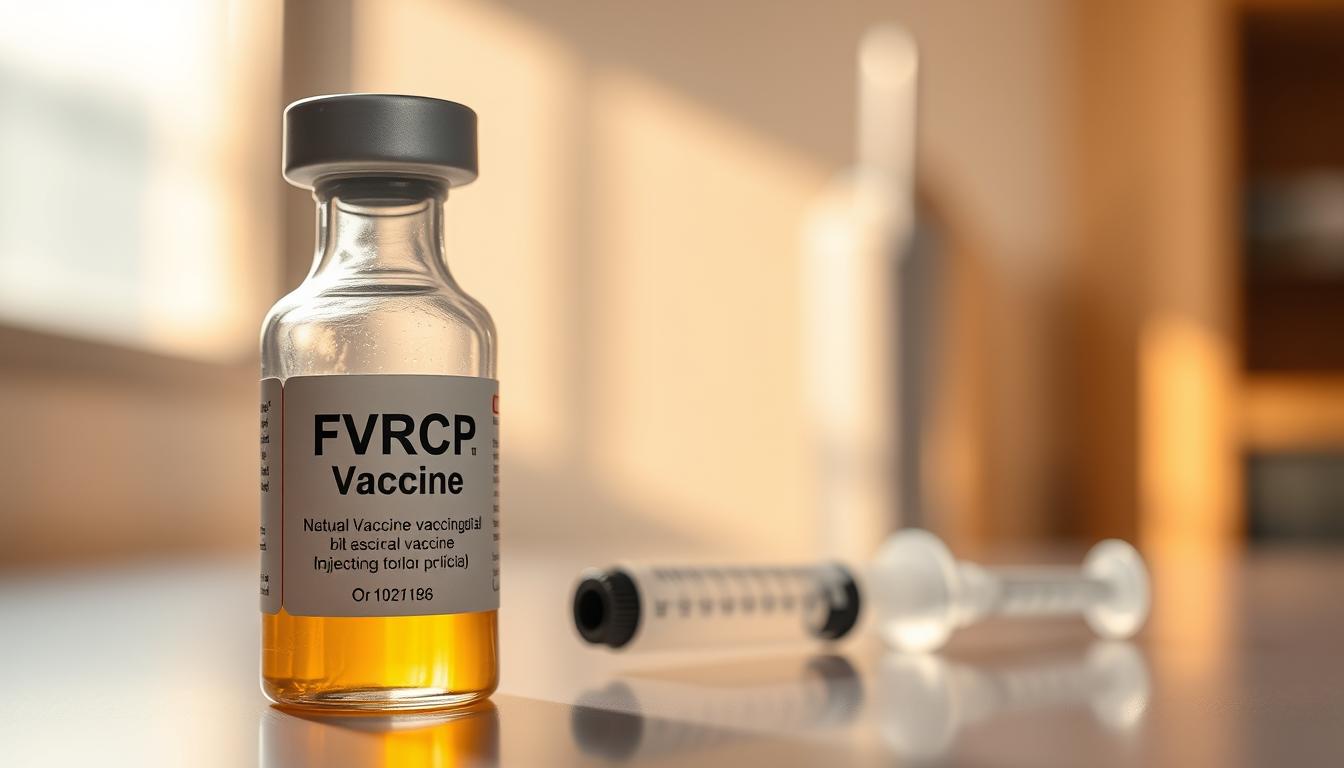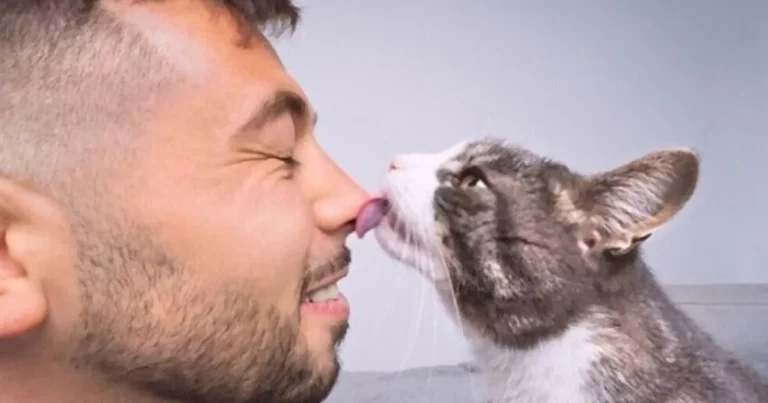FVRCP Vaccine Side Effects in Cats: What to Expect
Table of Contents
As a devoted cat parent, I know the worry about vaccinations. When your cat gets the FVRCP vaccine, you might worry about side effects. This vaccine is key to protecting them from serious diseases.
Cat vaccination reactions are normal and keep your pet safe. The FVRCP vaccine fights off dangerous viruses. Knowing what to expect helps you care for your cat better.
Your vet is your best friend when it comes to vaccine side effects. They can tell you what’s normal and what’s not. This helps you make the best choices for your cat’s health.
In this guide, we’ll cover everything about the FVRCP vaccine. You’ll learn about common side effects and rare issues. This will help you support your cat through their vaccination journey.
Understanding the FVRCP Vaccine for Cats
Keeping your cat healthy begins with knowing about important vaccinations. The FVRCP vaccine is key in fighting off serious diseases. These diseases can affect cats of all ages and lifestyles.
Diseases Prevented by FVRCP
The FVRCP vaccine protects against three major feline diseases:
- Feline Viral Rhinotracheitis (FVR): A herpesvirus causing severe respiratory infections
- Calicivirus (C): Another respiratory disease with potential for serious complications
- Panleukopenia (P): A highly contagious and potentially fatal viral infection
Why FVRCP is a Core Vaccine
Vets call FVRCP a core vaccine because it’s vital in stopping deadly diseases. While rare, not vaccinating can lead to serious health issues.
Indoor vs Outdoor Cat Vaccination Needs
Many think indoor cats are safe from diseases. But, viruses can still get inside your home through:
- Airborne transmission
- Human clothing and shoes
- Other pets
| Cat Type | Vaccination Risk | Recommended Protection |
|---|---|---|
| Indoor Cats | Lower direct exposure | Still require full FVRCP vaccination |
| Outdoor Cats | Higher direct exposure | Critical need for complete vaccination series |
Knowing about FVRCP vaccination helps you protect your cat. Always talk to your vet to find the best vaccination plan for your cat.
FVRCP Vaccine Side Effects: Common Reactions
When your cat gets the FVRCP vaccine, knowing about side effects is key. Most cats do fine, but knowing what to watch for helps keep them healthy.
Vets say mild reactions are common after the FVRCP shot. These side effects usually show up within hours or a few days.
Mild and Expected Responses
Your cat might feel a few mild things that are normal:
- Low-grade fever
- Temporary lethargy
- Reduced appetite
- Slight swelling at injection site
- Mild sneezing
When to Be Concerned
Even though most side effects are minor, some need quick vet help:
- Persistent vomiting
- Significant swelling
- Difficulty breathing
- Continuous weakness
- Severe allergic reactions
Duration of Side Effects
Most side effects go away in 24-48 hours. If symptoms last longer than two days, call your vet.
| Side Effect | Typical Duration | Action Required |
|---|---|---|
| Mild Fever | 12-24 hours | Monitor, rest |
| Lethargy | 24-36 hours | Quiet environment |
| Injection Site Swelling | 48-72 hours | Cold compress |
Every cat is different when it comes to vaccines. Keeping a close eye on your pet and talking to your vet is crucial for their health and safety.
Vaccination Schedule and Timing
Knowing when to give your cat the FVRCP vaccine is key. It helps avoid side effects and keeps them safe. Kittens and adult cats need different vaccination plans.
Kittens start their vaccinations early. Vets say to begin the FVRCP vaccine when your kitten is 6 to 8 weeks old. This first shot is the start of a series to build strong immunity.
- First vaccine: 6-8 weeks of age
- Booster shots: Every 3-4 weeks
- Complete initial series: Around 16-20 weeks old
Kittens get many doses to ensure they’re fully protected. These shots help prevent side effects and keep them safe from diseases. Adult cats, on the other hand, need boosters less often, usually every 1 to 3 years.
Several things affect when to vaccinate your cat:
- Cat’s overall health condition
- Indoor or outdoor living environment
- Potential exposure to other cats
- Age and immune system strength
Always talk to your vet to make a vaccination plan that fits your cat’s needs.
Severe Adverse Reactions and Warning Signs
While fvrcp vaccine side effects are usually mild, cat owners need to watch for severe reactions. Knowing the warning signs is key to keeping your cat safe during and after the shot.
Severe reactions to the feline distemper shot are rare but can be deadly. Spotting these symptoms early is crucial for your cat’s health.
Anaphylaxis Symptoms
Anaphylaxis is the most serious vaccine reaction. Look out for these immediate signs:
- Sudden facial swelling
- Difficulty breathing
- Rapid or weak pulse
- Extreme lethargy
- Pale or white gums
Emergency Response Guidelines
If you see severe fvrcp vaccine side effects, act fast:
- Call your vet right away
- Keep your cat calm and warm
- Don’t try to treat at home
- Be ready to take your cat to emergency vet care
Risk Factors for Severe Reactions
Some cats face a higher risk of serious reactions to the distemper shot. These include:
| Risk Factor | Potential Impact |
|---|---|
| Previous allergic reactions | Higher chance of severe response |
| Very young or senior cats | More vulnerable immune systems |
| Chronic health conditions | Increased vaccination sensitivity |
| Small breed cats | Potentially more intense reactions |
Always talk to your vet about your cat’s risk before the shot.
Managing Post-Vaccination Care at Home
After your cat gets the FVRCP vaccine, knowing how to handle side effects is key. Most reactions are mild and can be managed at home. Just make sure to give your cat the right care and attention.
Make a cozy spot for your cat to rest. Keep it quiet and provide soft bedding. Make sure they have easy access to water and food. Watch for any signs that might mean they need to see a vet.
- Monitor your cat’s temperature and behavior
- Ensure fresh water is always available
- Offer small, gentle meals
- Keep your cat indoors and relaxed
Some cats might feel a bit tired or uncomfortable after the shot. Gentle petting and quiet companionship can make them feel better. If your cat’s reaction lasts more than 24-48 hours or seems bad, call your vet right away.
Remember: Your attentive care is the best medicine for your cat’s post-vaccination healing.
Look out for signs that need vet help, like:
- Persistent vomiting
- Significant swelling at injection site
- Extreme lethargy lasting more than a day
- Breathing difficulties
Most cats bounce back quickly from the vaccine with little help. Your calm and caring support will help them get through this health step easily.
Cost and Administration of FVRCP Vaccines
Knowing the cost of the FVRCP vaccine is key for cat owners. The price to protect your cat from diseases varies. But understanding this helps you plan for your cat’s health care.

The cost to prevent FVRCP vaccine side effects is usually between $20 and $50 per dose. Several things affect the final price:
- Where the vet clinic is located
- Whether it’s a private clinic or a low-cost center
- If it’s part of a wellness package
- Any extra vet services with the vaccine
Price Range Across Different Clinics
Looking around for the best price on FVRCP vaccine side effects prevention is smart. Local animal shelters and community clinics often cost less than private practices.
Insurance Coverage Options
Many pet insurance plans cover routine shots, including the FVRCP vaccine. When picking a policy, look for:
- Coverage for preventive care
- Reimbursement for vaccinations
- Wellness plan options
Getting the FVRCP vaccine is a smart move to avoid costly treatments for serious cat diseases. Your early action can save a lot of money on vet bills later.
Injection Site Reactions and Monitoring
After getting the FVRCP vaccine, your cat might show some signs at the injection site. Knowing about these reactions helps you keep an eye on your pet’s health.
Most cats get a small, firm bump where they got the vaccine. This is usually mild and goes away in a few weeks. Not all changes at the injection site mean serious problems.
- Normal reactions include:
- Slight swelling
- Minimal tenderness
- Temporary skin discoloration
- Warning signs that need vet attention:
- Persistent lumps lasting over 3 weeks
- Significant pain or inflammation
- Rapid growth of the injection site area
Vets say it’s important to watch your cat closely for the first few weeks after the vaccine. Though rare, some cats might get injection site sarcomas. So, it’s key to watch for any signs of trouble early on.
“Prevention and early detection are key to managing vaccine-related reactions in cats” – American Veterinary Medical Association
If you see anything odd or worry about your cat’s injection site, call your vet right away. They can help and make sure your cat stays healthy.
Special Considerations for Kittens and Senior Cats
Kittens and senior cats need special care when it comes to vaccinations. Their health and age can affect how well they handle vaccines. This means the risks of FVRCP vaccination can change a lot.
Kittens are especially sensitive to vaccine side effects. Their immune systems are still growing. This makes them more likely to react to vaccines. Vets usually give kittens vaccines in stages.
- Kittens should get their first FVRCP vaccines at 6-8 weeks old
- They need booster shots every 3-4 weeks until they are 16 weeks old
- At least three rounds of vaccines are needed for full protection
Senior cats face different challenges with vaccinations. Their immune systems are weaker. This means they need a careful approach to avoid vaccine risks.
| Age Group | Vaccination Considerations | Potential Risks |
|---|---|---|
| Kittens (6-16 weeks) | Gradual, spaced-out vaccine schedule | Higher sensitivity to side effects |
| Senior Cats (7+ years) | Individualized vaccine assessment | Potential immune system complications |
Your vet can create a vaccination plan that fits your cat’s needs. This plan aims to reduce side effects while keeping your cat safe.
Always talk to a vet to find the best vaccine plan for your cat.
Conclusion
It’s important for cat owners to know about FVRCP vaccine side effects. While some cats might react, the vaccine’s benefits are greater. Your vet can give you the best advice for your cat’s health.
Most cats don’t feel much pain from the vaccine. Any mild reactions usually go away quickly. With the help of your vet, you can keep your cat safe from serious diseases.
Vaccinations are key to keeping your cat healthy for a long time. Regular vet visits and talking openly with your vet are crucial. The FVRCP vaccine is safe and effective for your cat’s health.
By learning about vaccine reactions, you show you care about your cat’s health. Always listen to your vet and watch your cat closely after a shot.







